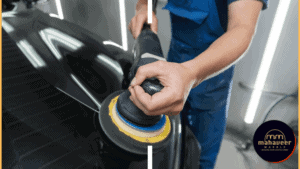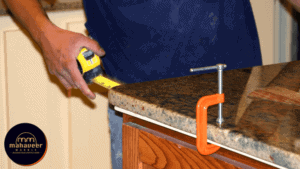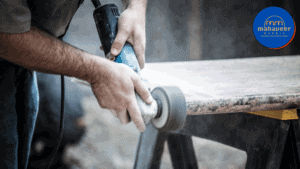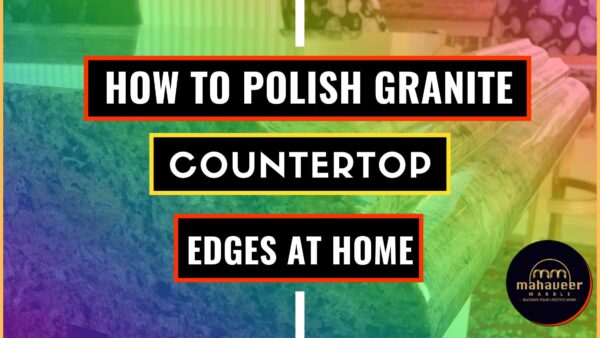Granite countertops are a beautiful addition to any kitchen. But, they can also be difficult to clean and maintain. One of the most time-consuming tasks that granite owners face is polishing their edges. It’s not easy to get those hard-to-reach spots when you have a busy life and other chores in your home. Here are some DIY tips for how polish your granite edges at home!
Things you Need Before Polishing Granite Edges
You can get an excellent granite finish with diamond polishing pads. Start at 50, 100, 200, 400, and 800 grits to remove minor imperfections before going up in increments of 1000 until you reach 2000 or 4000 for a mirror-like surface! And don’t forget the safety equipment!
Put on safety glasses so that any spilled chemicals won’t hurt your eyes and wear a face mask so no small particles will go into your lungs.
Here are the steps how to Polish Granite Edges
1. Place the granite on a flat and level surface
Be careful not to place the granite slab directly on your work table, but instead clamp it with a thin piece of wood over its surface first. This will keep any damage from occurring and allow you easy access for polishing later when we’re done using our vise or clamps. To polish effectively, be sure that all edges are hanging off the end of your work area so there’s no risk of scratching up other parts while finishing those last few corners!

2. Apply Water on Granite Edges
The edge should be wet before any other steps occur. This will minimize the development of dust particles, which can lead to foreign material in your food and beverages.
3. Plug the Polishing Pads into the Grinder
You’re going to need a backing pad for your granite grinder. Attach it so that the grit is rotating clockwise, and tighten it down firmly before you start polishing! The first one should be 50-grit.

4. Start With GRIT 50 on Granite Edges
When you are buffing a floor with aggressive grit, it is important to use the slowest speed possible. A powerful grinder can do too much damage if used improperly.
5. Gently Move The Grinder from Left to Right
Stay friendly and in charge by following these simple steps to buff your granite countertop. Start with the grinder angled at a 45-degree angle on the right side of the edge, just above where you want to start polishing. Apply consistent pressure as you move left towards that topmost corner – for about 5 seconds or so per stroke! Then apply this same technique moving downward along each visible section of the edge until every inch is polished to perfection!

6. As you go down While Polishing Wipe the Water
When you wash the edges of your granite with water, it will show if they have already been smoothed. If a portion is still wet, this means that you haven’t done enough grinding because the grinder should remove any moisture from the stone surface.
7. Speed the Polishing to Grit 100
Grits come in different strengths, and the higher the number of grit pad, the finer it is. The next strongest grade to use after 100 would be 200 followed by 400 from which you can see smoothness on granite surfaces while still having no shine. At level 800 though there will be some degree of subtle shininess that remains once applied to your stone surface
8. Switching the GRIT Pads While Moving the Grinder
The finer the grit, the smoother your granite will look. To avoid scratches and get a nice shine to it. you should use higher number pads from 100-800. The most popular is 200 then 400 before switching over to 800 for that extra shine!
9. Polish with finer Grit Buffing Pads
From left to right, use consistent pressure while working the grinder from around a 45-degree angle. At this point in time, you’ve smoothed out your granite and are now polishing it with short vertical motions as you go back over its surface for high gloss.
When you’ve reached the desired shine, it’s time to polish with some higher grits. Keep increasing your gritting pad until you achieve a level of brightness that suits your fancy. Seal in all this hard work with sealer for protection from stains and spills later on down the line!

Conclusion
We’ve talked about how to polish granite edges and the importance of using a high-quality polishing pad. If you need help figuring out which type of natural stone is best for your project. You can visit our Granite Section
we have an expert on staff who can answer any questions you have! Give us a call today at 9142334233 or Visit our homepage

